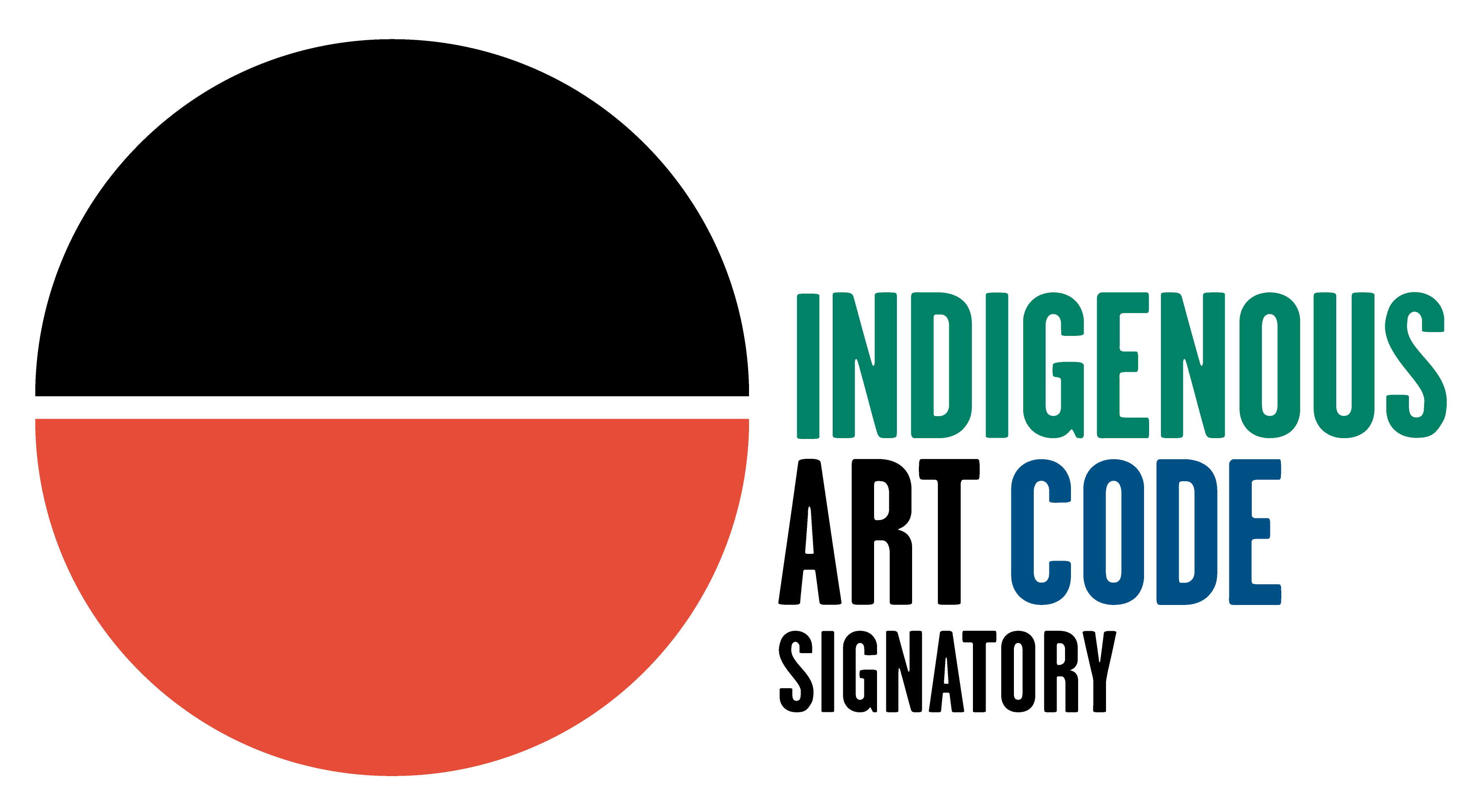Binygurr Wirrpanda Yolngu, b. 1973
74 3/8 x 5 7/8 in
This work depicts Mäna the ancestral shark in the saltwaters of country shared by the Dhuwa clans of the Djapu, Dhudi Djapu, Marrakulu and the Wanapuyŋu, Dhukuyuna and Wawalak. In other terms the top and bottom Djapu meeting with the top and bottom Marrakulu clans at this place - Lutumba symbolises the connection. Lutumba refers to an area not just of saltwater but an important area of land that joins at the coast. The area is traditionally used for final resting grounds of the deceased or Wukidi. It is located on the north shore of the Baykultji River and out stream. Here depicted in this painting the essence of the Dhudi-Djapu soul, on the move as a result of final mortuary rites, manifest as the shark. In sacred ceremony (such as Dhakiyarr’s Wukiḏi ceremony at the NT Supreme Court on 29.6.03) this spirit follows/is pulled by the sacred line called Yaltharr down deep through the Dhaŋarr or the profound water of Lutumba to the Ancestral reservoir of Buralku. The liver of this shark is the djukurr or yothu (child) of Dhudi Djapu women who are of necessity married to men from the opposite Yirritja moiety. The children of these unions are born with their father’s kinship identity. Dhudi Djapu people stress the inherent identity of the child as ‘coming from the shark’. Put crudely ‘you can take the liver out of the shark but you can’t take the shark out of the liver’. She is talking of her own children as having the essence of “Dhudi-Djapu-ness” within them.
The Larrakitj had its traditional use for the Yolŋu of North east Arnhem Land as an ossuary or bone container erected as a memorial to a dead kinsman up to a decade after death. After death the body of the deceased was often ceremonially placed on a raised platform and left to the elements for an appropriate time. The area would then be abandoned until the next stage of the ritual. This took place once it was determined that the essential eternal spirit of the deceased had completed its cyclical journey to the spring from which it had originated and would in time return again. This might be several years. Whilst the body was ‘lying in state’ others got wind of the death, perhaps by subliminal message and made preparations to journey to the site of mortuary. Usually enough time had elapsed for the bones of the deceased to be naturally cleansed on the platform. The essence of the soul within the bone was made ready for final rites when other outside participants necessary for its safe journey arrived. Ritual saw the bones of the deceased placed within the termite hollowed memorial pole for final resting.Mortuary ritual would end with the placement of the Larrakitj containing the bones standing in the bush. Over time the larrakitj and its contents would return to mother earth. The Larrakitj has often been referred to as the mother’s womb. Once sedentary mission communities were established in Arnhem Land it became impractical to abandon permanent communities and outlawed to expose corpses on platforms. However the cosmology of the Yolŋu and the essence of ritual mortuary ceremony remains just as important. Larrakitj continue to be produced as the equivalent of headstones or to contain the personal effects of a deceased (which might be dangerous unless removed from the living because of the emanations imbued by contact with the deceased). A further role for this cultural form is as a fine art object and an instructional tool for younger generations. Artworks of this nature have multiple layers of metaphor and meaning which give lessons about the connections between an individual and specific pieces of country (both land and sea), as well as the connections between various clans but also explaining the forces that act upon and within the environment and the mechanics of a spirit’s path through existence. The knowledge referred to by this imagery deepens in complexity and secrecy as a person progresses through a life long learning process.


